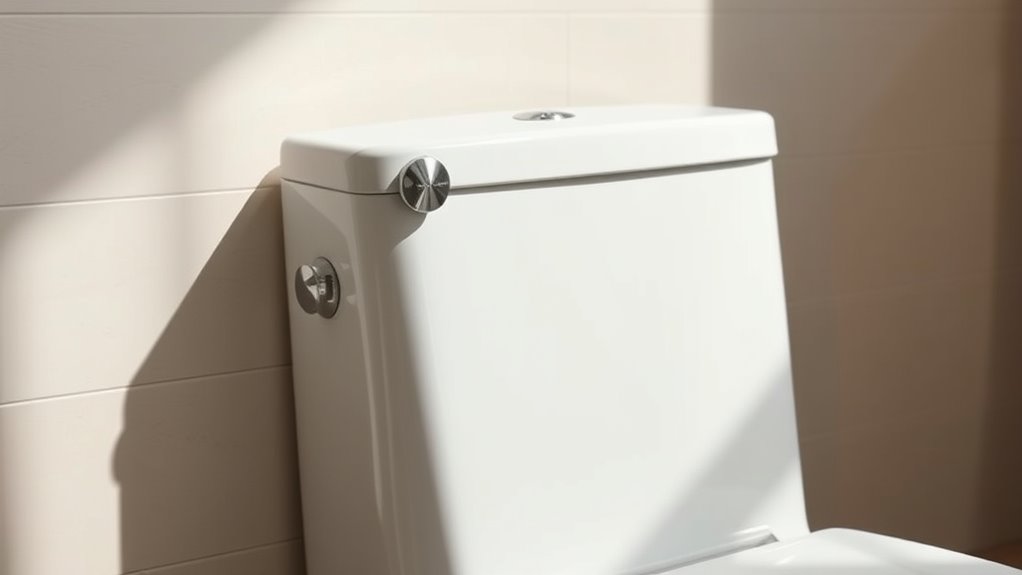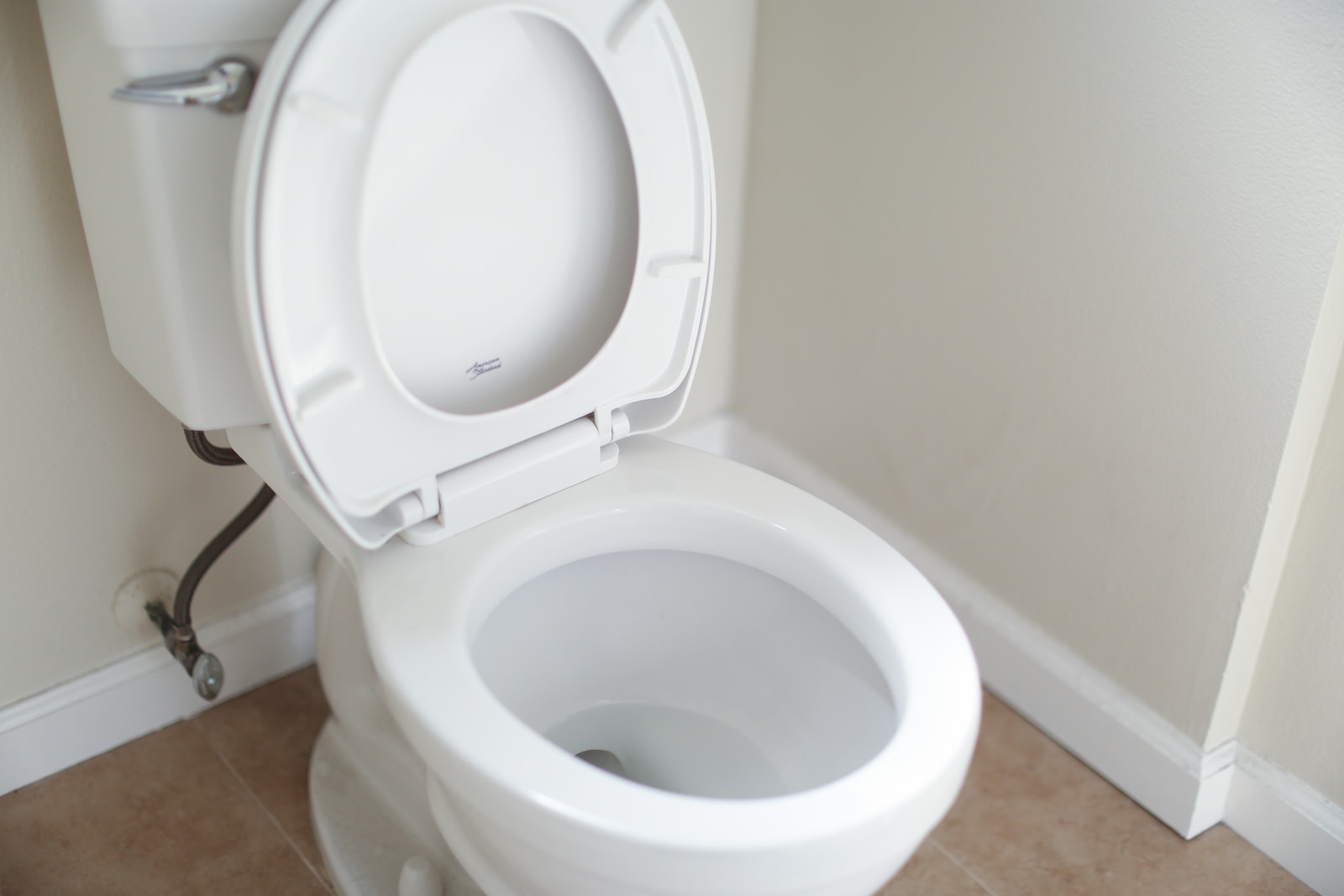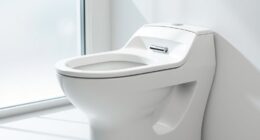WaterSense toilets are certified by the EPA to meet strict standards for water efficiency and performance, helping you save water and reduce utility bills. These toilets use less water per flush without sacrificing effectiveness, making them eco-friendly options for your home. Proper installation and maintenance are essential to maximize their benefits and longevity. If you’re curious about how these fixtures can help you conserve water while working well, there’s more to discover here.
Key Takeaways
- WaterSense certification ensures toilets meet EPA standards for water efficiency without sacrificing performance.
- Certified WaterSense toilets significantly reduce water use, promoting environmental conservation and lowering utility bills.
- Proper installation and maintenance of WaterSense toilets maximize water savings and prevent leaks or malfunctions.
- Dual-flush features in WaterSense toilets allow users to select between full and partial flushes, enhancing conservation.
- Choosing WaterSense certified toilets guarantees quality, reliability, and environmental benefits in bathroom fixtures.

WaterSense toilets are designed to save water without sacrificing performance, making them an eco-friendly choice for your bathroom. When you’re considering installing one, it’s crucial to follow proper installation guidelines to guarantee optimal function and efficiency. First, verify that the toilet is certified by the EPA’s WaterSense program, guaranteeing it meets strict water-saving standards. During installation, make sure your bathroom’s plumbing connections are secure and compatible with the new toilet. Use the right wax ring and bolts to prevent leaks, and double-check that the toilet is level to avoid any wobbling or unusual noise. Proper installation not only maximizes water savings but also extends the lifespan of your toilet, saving you money on repairs and replacements down the line. Additionally, ensuring your toilet is correctly installed can help prevent clogs or leaks that diminish efficiency over time.
Once your WaterSense toilet is installed correctly, maintaining it properly will keep it running efficiently for years to come. Regular maintenance tips include inspecting the toilet for leaks or cracks, which can waste water and diminish performance. If you notice a running toilet, check the flapper and fill valve for wear or buildup, and replace any faulty parts promptly. Cleaning the bowl and tank regularly with mild, non-abrasive cleaners helps prevent mineral deposits and keeps the flushing mechanism working smoothly. It’s also a good idea to periodically check the water level in the tank; adjusting the float can enhance water use per flush, maintaining the efficiency that earned your toilet WaterSense certification.
Beyond installation and routine maintenance, understanding how your WaterSense toilet functions allows you to troubleshoot minor issues effectively. For example, if flushing seems less effective, you might need to clear out any obstructions or adjust the flush valve. Keeping the internal components clean and free of debris ensures consistent performance. Additionally, consider installing a dual-flush mechanism if it isn’t already included; this allows you to choose between a full or partial flush, further conserving water on lighter waste.
Frequently Asked Questions
How Often Should Watersense Toilets Be Serviced or Maintained?
You should perform maintenance on your WaterSense toilet at least once a year to guarantee peak performance. Regular service frequency helps prevent issues like leaks or clogs, saving water and reducing your utility bills. Check for any signs of wear or damage, such as constant running or weak flushing, and address them promptly. Following a consistent maintenance schedule keeps your toilet efficient, eco-friendly, and compliant with WaterSense standards.
Are Watersense Toilets Compatible With All Plumbing Systems?
Surprisingly, WaterSense toilets are compatible with most plumbing systems, making installation a breeze. You just need to check plumbing compatibility and consider installation considerations beforehand. While they’re designed to fit standard setups, some older or unique systems may require adjustments. Don’t worry—most homeowners find that these eco-friendly toilets integrate seamlessly, so you can enjoy water savings without a plumbing headache. Just double-check, and you’re good to go!
Do Watersense Toilets Require Special Cleaning Products?
You don’t need special cleaning products for WaterSense toilets, but eco-friendly cleaning options are recommended to uphold their efficiency and sustainability. Most WaterSense toilets are compatible with typical cleaning chemicals, but always check for chemical compatibility to avoid damage. Using gentle, environmentally friendly cleaners helps preserve the toilet’s eco benefits and ensures it stays in good working condition without harsh chemicals that could harm plumbing or the environment.
Can Watersense Toilets Be Installed in Existing Bathrooms Easily?
Installing WaterSense toilets in your existing bathroom is usually straightforward, but you might face some installation challenges. You can often retrofit them easily with compatible parts, reducing the need for major renovations. Prepare for potential adjustments in your plumbing or mounting setup, but rest assured, most WaterSense models are designed for simple, quick installation, making it a practical upgrade without extensive remodeling.
Are There Any Rebates or Incentives for Installing Watersense Toilets?
Yes, you can often find rebate programs and installation incentives for WaterSense toilets. Many local utilities and government agencies offer rebates to encourage water conservation, helping you save money upfront. Check with your utility provider or local government for specific programs available in your area. Taking advantage of these rebates makes installing WaterSense toilets more affordable and environmentally friendly, giving you both financial and water-saving benefits.
Conclusion
Choosing a WaterSense toilet not only helps conserve water but also connects you to a network of eco-conscious homeowners. It’s a small upgrade that can lead to big savings and environmental impact—like discovering your favorite shirt was accidentally packed in the wrong box all along. So, when you pick a certified model, you might just find yourself part of a larger movement, proving that even simple choices can create surprising, positive ripples for your home and the planet.









